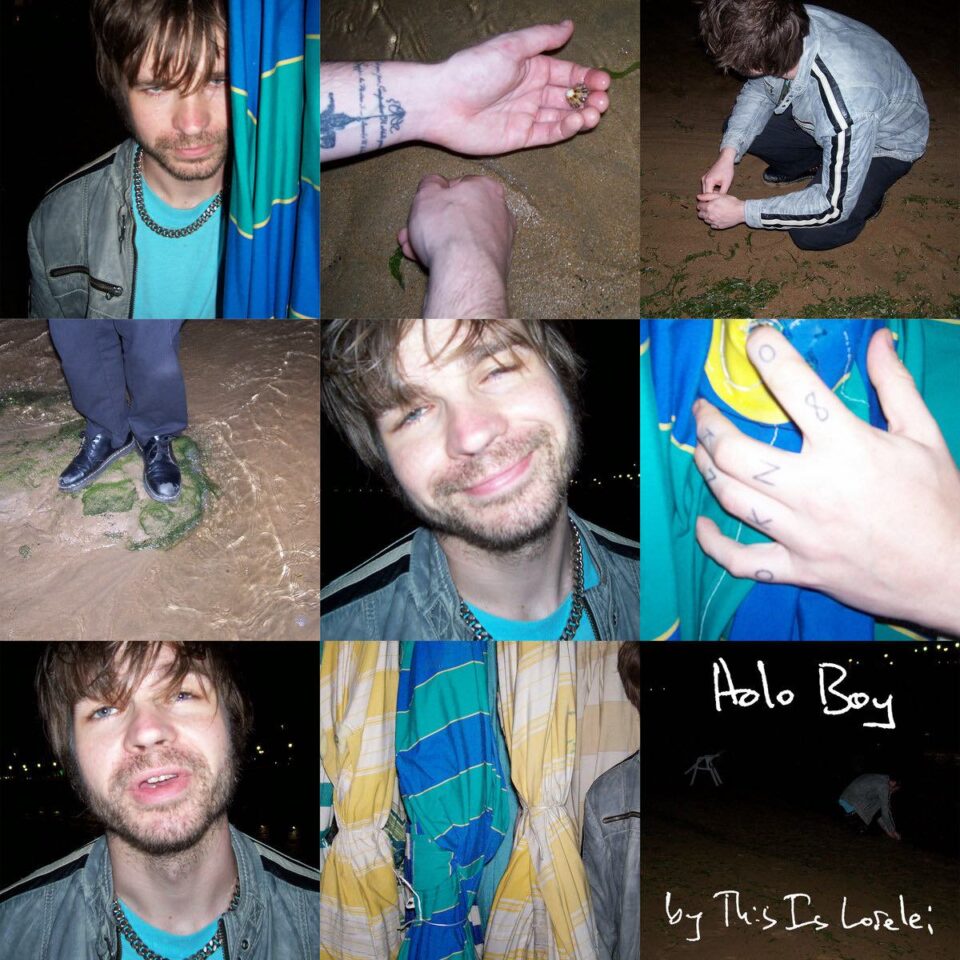Tim Hecker’s Love Streams is probably the most bare-bones album in the electronic-noise musician’s repertoire. (We would normally say “catalog,” but he’d hate that—see below.) With an ear trained on melody, the Vancouver native and recent LA transplant took a sparser, less-is-more approach on his eighth solo album.
At the same time, Love Streams is his first album to feature vocals. It was crafted in three countries (including Iceland, where he recorded 2011’s Ravedeath 1972 and 2013’s Virgins), and it features pipe organs and woodwinds, among other instruments. Hecker took sheet music by fifteenth century composer Josquin des Prez and transformed it with digital-synthesis technology called Melodyne. Oh, and he initially had his choir sing in reverse Latin.
For a guy who acquired a PhD on the cultural history of loud sound between 1880 and 1930, departing from such historical ground is actually rather apropos.
Hecker recently unveiled his stunning new Frankenstein—along with phantasmagoric audiovisual accompaniments—to hundreds of giddy onlookers at Los Angeles’s UNION nightclub the day before he shared Love Streams with the masses. We chatted him up about how he views his songs as colors, how Mongolian horses made it into the mix, and why saying the word “merch” is blasphemy.
Why did you decide to do more press for Love Streams than you typically do for an album release?
Sometimes you know when there’s too much of you in the world. I’m really attuned to that. I have an intuitive sense of when it’s good to talk and when it’s not. I go through phases where I do a record and barely talk about it, then talk for a month nonstop and shut my trap. With the next record, I’ll keep it pretty low-key.
Are you planning to do the standard tour cycle for the release as well?
I’m trying not to tour in the conventional sense. Releasing an album and hitting the road for a year… If that’s the way I have to make a living, I’d rather do something else. That’s not a sustainable model. I’m playing ten to fifteen dates, mostly in Europe and a few in the States, one or two in Canada, and in Australia.
Why isn’t that model sustainable?
I don’t see myself in the rock-music industrial apparatus. The word “merch” makes me ill. There has to be another paradigm. I don’t know what it is, but I don’t think it’s inherently necessary. I question the logic behind needing 150 dates a year. I made a “product” for “sale.” That’s enough. But, obviously, I’m also realistic.
“I tried to work on music that was more veneer-orientated, with feelings of gaudy fabric. I intentionally tried to go in a different direction, focusing on Mongolian horses and Chinese dream celebrations with a choir.”
Do you approach each new album with a blank slate?
Music is shifting constantly in terms of how the object is made and how it’s put out in the world. I still think we can support music in a way that recognizes you as an artist and your continuity as an artist, but also provides temporary amnesia from your catalog and makes space to express yourself in a state of induced naïveté.
How has your perspective on music changed since Virgins?
I tried to work on music that was more veneer-orientated, with feelings of gaudy fabric. I intentionally tried to go in a different direction, focusing on Mongolian horses and Chinese dream celebrations with a choir.
How quickly did the concept for Love Streams materialize, and how quickly did the album come to fruition?
It occurred pretty quick. I started riffing off Medieval choral music and the pieces came out. Then I collaborated with [composer Jóhann Jóhannsson] to make vocal arrangements and did further studio sessions and studio treatments of that work. Love Streams was recorded in one day in December 2014. We booked an eight-person choir to come to the studio, spent about eight hours going through different pieces and different versions, and had them repeat and improvise different scores.
Did it seem immediately appropriate to use vocals for the first time, or did you resist the idea?
It was an idea that started pretty early and guided the work. It was like a puzzle: how would one approach the voice given the kind of music that was being brewed at that point? How would that work with these pieces? That was the puzzle to unlock.
Why do you prefer to record in Reykjavik?
Reykjavik is a place where I have friends, and I have a really great space to work. It’s both relaxing and easy. It’s really professional and has world-class, high-quality facilities to do top-shelf work. But only two days out of six months of work occurred in Reykjavik. The rest of the album was written in Montreal and LA. I then took the recording sessions from Reykjavik and returned to LA to work on them. It was like returning from a cave after finding these cadmium yellows and ultraviolet blues. I worked with the recordings as if they were paints.
How is Love Streams particularly meaningful to you as an artist?
It feels like more of an honest, loose, playful record than some of the ones that I’ve done in the past. I intentionally didn’t make a grandiose work. I tried to restrain myself a lot and tried to be more oblique, confusing, and refracted. That may not be how it’s received, but that was my intention.
If you can’t push yourself forward, at a certain level you can’t function. You have no choice but to engage with something fuller; there’s no way out of that. The way one gets toward doing work like this is to challenge yourself, because coming up with a language is very challenging. In the studio, using all these different tools and treatments, you have to push yourself. FL







